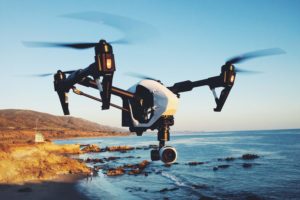 The Poynter Institute, a number one journalism coaching and useful resource heart, has developed a brand new ethics coverage for drone journalism.
The Poynter Institute, a number one journalism coaching and useful resource heart, has developed a brand new ethics coverage for drone journalism.
The coverage was written by Poynter teacher Al Tompkins, in partnership with stakeholders from DJI, main analysis establishments, and the National Press Photographers Association. The tips have been developed over the course of 4 workshops coaching over 300 journalists and educators in drone journalism.
“In addition to exam prep and hands-on drone flight training, our partners and I vowed to produce a ‘code of drone journalism ethics’ that would take into account journalism and photojournalism ethics policies but add the legal considerations for flying in government-controlled airspace and safety concerns that come with remote controlled flight,” says Tompkins.
The tips start by stating that each one drone journalists should comply with present legal guidelines about drone operation. “Drone Journalism ethics should be even more stringent than other journalism ethics,” writes Tompkins. “It is one form of journalism that is legally regulated by government authorities who control airspace.”
In abstract, the drone journalism ethics tips state that journalists should maintain security as their “first concern,” flying below a 107 license and behaving responsibly. The tips additionally state that newsrooms have an obligation to not encourage employees to fly with no license by recognizing them for footage captured illegally.
Journalists are additionally inspired to use the identical sense of privateness that they might to floor images to work with a drone. “Would you ‘do that’ if you were capturing the image while on the ground?” asks Tompkins. “If you would not peer over a fence, look into a window or enter private property, how would you justify capturing the same image because you are airborne?”
Drone journalists are inspired to respect privateness, to not interrupt or search to affect the occasions that they’re filming, and to not “improperly enhance” video by including results that may change the context of a narrative.
“Carefully consider how slow motion or speeding up effects might affect the editorial integrity of the video,” writes Tompkins. “Slow motion can appear dramatic and change the context of a news story. Video that has been sped up may add false urgency.”
Recognizing that journalists are sometimes influenced by newsroom administrators, the rules emphasize that in terms of drone journalism, the pilot in command have to be the ultimate say on security. “Newsrooms should not ask or pressure a drone pilot to fly in a way that the pilot in command considers to be unsafe or legally questionable,” say the rules. Additionally, pilots shouldn’t be requested to do anything whereas working the drone.
The tips level out that pilots must observe flight abilities repeatedly to “stay sharp,” and function safely. They end by declaring drone journalists accountability to “coach others” on this rising subject:
“The public’s perception of drone flights depends on how professionally pilots operate in these early days of this emerging technology,” writes Tompkins. “…It is in your interest and it is in the public’s interest for you to coach other operators, especially other journalists, when you see them flying unsafely, illegally or unethically.”
 Unmanned Aerial Vehicle The latest drone news
Unmanned Aerial Vehicle The latest drone news




